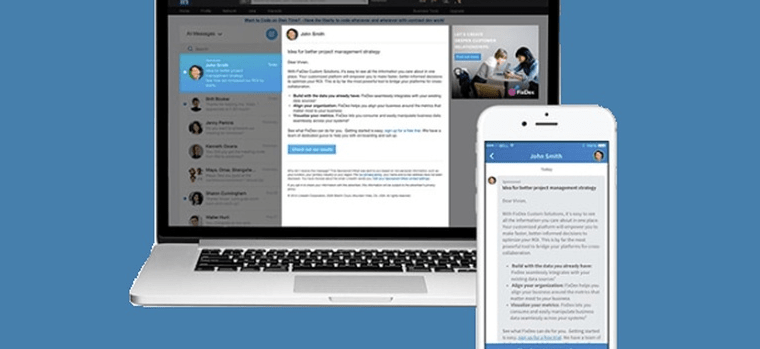By Lauren Wingo
Business leaders and entrepreneurs share their top small business growth strategies for the year ahead.
2021 has been a year of rapid transformation across all industries as the country has dealt with shifting political and economic climates, as well as mitigating hot-button issues such as climate change. In a year filled with change, there are some trends making their way into the new year that you and your business should keep an eye out for.
To lead your business in the right direction as we head into 2022, here are 10 small business growth strategies entrepreneurs recommend.
Leverage your suppliers’ new product rollouts
Distributors and businesses across the country dealt with supply chain issues with the continuation of the COVID-19 pandemic and its subsequent economic disruptions. In 2022, businesses must be aware of scarcities within the supply chain and get ahead of manufacturing and transportation challenges by working collaboratively with their suppliers.
“We rely on supply availability and over-the-road transportation,” explained Karen Olson Beenken, president and CEO of Blue Rock Companies. “Our supply has been cut over the last 18 months to accommodate larger metro markets. We’ll utilize the different new product rollouts our suppliers offer and work to grow those.”
Educate client partners on new paradigms
It’s important to inform your clients and partners about changes you’re making to better benefit your business across a shifting economic landscape. If the changes don’t land, it may be time to consider other options, said Larry Kidd, president and CEO of hire.
“Our company is in the talent business and [is] painfully aware how much the talent pool has changed,” said Kidd. “We are working with our client partners to educate them on the new management styles, increased compensation packages and other aspects of recruitment and retention.”
Prepare for potential contracting opportunities with state and federal governments
The Census Bureau reported this past June that there were more than 4.4 million new U.S. businesses created in 2020, the highest total on record. While business creation has soared, data is showing that a large number of companies have left the state and federal government markets.
“The Department of Defense outlined at a recent conference that between 43% and 60% of the small business industrial base is no longer in the federal space,” said Padma Vatsavai, CEO at Vinformatix. “The impact [on] the small business community is due to quite a few changes in state, local and federal acquisition.
“Strategic sourcing and category management are the name of the day,” Vatsavai added. “[We’re focused on] building a strong programmatic teaming strategy so that the company can prime or sub any opportunity.”
[Read more: How to Bid on a Federal Government Contract]
Get creative on sales and marketing opportunities
The digital marketing landscape has become increasingly challenging due to congestion and evolving regulations, said Joe Shamess, owner of Flags of Valor.
“This is forcing many traditionally digital companies to explore other sales channels and marketing strategies,” he said.
To mitigate these challenges, Shamess said his company is getting creative with its selling methods by expanding its national retail sales channel for select products and growing the company’s Amazon sales channel for its full product catalogue.
Small business owners will now be able to bring in more specialized freelance workers to carry out tasks without having to deal with the hiring and training costs that are often associated with recruiting a full-time employee.
Eden Cheng, co-founder, PeopleFinderFree
Widen your business’s online footprint
Phil Strazzulla, founder of Select Software Reviews, explained that small businesses must adapt and be “practical” when it comes to sales, as consumers continue to favour online and mobile shopping.
“[Businesses] need to widen their online footprint to gain a significant proportion of customers from the current market,” said Strazzulla. “A simple way to sell products is to have a [seller account on] Shopify or Etsy. To sell services, … list [your company] on freelance and contract websites.”
Learn video SEO strategies to rank higher on search engines
Video marketing has become an integral part of a successful marketing strategy with the rise of live videos on platforms like TikTok and Instagram. It’s estimated that by 2022, videos will account for 82% of all consumer traffic. That’s why video SEO should be a top priority for businesses in 2022, said Leslie Gilmour, a marketer at ServisBOT.
“Small businesses that incorporate short-form videos into their website posts will see more organic traffic coming from search engines,” explained Gilmour. “As TikTok continues to grow, search engine algorithms will shift to articles and posts that include short-form videos. Short-form videos from TikTok and YouTube may even become the main point of ‘how to’ searches.”
Utilize partnership marketing to reach a broader audience
Partnership marketing is a strategic collaboration that gives you and your partner company a chance to reach a wider audience together, explained Tyler Martin, founder and certified business coach at Think Tyler.
“Collaboration with another company can aid in the development of better marketing initiatives that benefit both parties,” said Martin. “If your target clients are similar, you may pool your resources to better your marketing techniques, build your brands and expand your audience reach.”
Martin suggests starting with complimentary items or services from one company offered with a purchase from the other.
“For example, if a consumer purchases a product from you, you can provide a discount coupon that they can use to purchase discounted products from your business partner,” said Martin. “Co-branding of a product or project can also boost both companies’ marketing power.”
Consider hiring more gig workers
The number of gig workers, freelancers and contractors has grown exponentially over the last few years and they make up a large portion of workers within the current market. Eden Cheng, co-founder of PeopleFinderFree, says this share of the job market will continue to grow in 2022.
“Small business owners will now be able to bring in more specialized freelance workers to carry out tasks without having to deal with the hiring and training costs that are often associated with recruiting a full-time employee,” said Cheng. “With the importance of being agile in today’s economic environment … as well as the rise of remote work, … skilled outsourced contractors will be the key to successful business growth moving forward.”
Work with micro-influencers
While small businesses may be competing against larger businesses to work with online influencers, collaborating with micro-influencers is an option to consider, said Anton Giuroiu, architect and founder of Homesthetics.net.
“As influencer marketing is becoming more popular than ever… micro-influencers are going to be the best option for small businesses because they don’t cost as much and they are more open to collaborating with small businesses too,” explained Giuroiu. “With a couple of these small influencers helping [your business] reach specific audiences, growth will not be an impossible feat in 2022.”
[Read more: How Big Brands Are Leveraging Microinfluencers to Spur Growth]
Prioritize company culture
Throughout the pandemic, businesses have been dealing with “The Great Resignation” as workers are quitting their jobs at record-high rates. One of the reasons for this is that people are changing their definitions of what they consider a healthy work-life balance and what they want in a company culture, explained Amanda Ma, CEO of Innovate Marketing Group.
“The pandemic has shifted the way people incorporate work into their life, whether it’s moving to another state for cheaper housing or not going into the office every day and [getting] the opportunity to do remote or hybrid work,” Ma said. “Our agency went from full-time in-person to full-time remote to … a hybrid model. We surveyed our team members to see the model that works for us.
“Not all solutions are made equal, [and] culture is part of that,” she added. “A big factor [for employees], in addition to salary and benefits, is culture, [so have] a culture strategy in place.”
Feature Image Credit: Getty Images/fizkes












